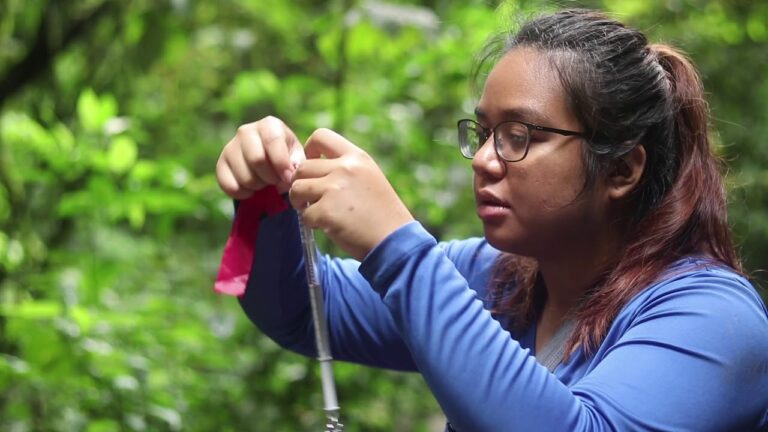Discover the Creativity and Potential of a Fine Artist Career: Job Description and Salary

Fine Artist Job Description Template
Fine Artist Job Description A fine artist is a creative professional who uses various mediums to create original artwork. They are skilled in visual arts and are experts in expressing their ideas, emotions, and concepts through their work. Fine artists may specialize in various forms of art, such as painting, sculpture, drawing, printmaking, or mixed media. One of the most important roles of a fine artist is to develop their own unique style and artistic voice. They must have a strong understanding of art history, techniques, and materials, and continuously experiment with new ideas and concepts. Fine artists often work independently, creating pieces for exhibitions, galleries, or commissions. They may also collaborate with other artists or work in art institutions. The job of a fine artist involves researching, planning, and executing artistic projects. They may work with various tools and materials, such as brushes, canvases, clay, or digital software. Fine artists must have excellent observational and technical skills to accurately represent their ideas on the chosen medium. They must also possess strong critical thinking and problem-solving abilities to overcome challenges in their artistic process. In addition to creating artwork, fine artists need to market and promote their work. They may participate in art fairs, showcase their pieces online, or collaborate with art dealers and galleries to exhibit and sell their artwork. Building a strong network and developing relationships with collectors, art enthusiasts, and other professionals in the industry is crucial for success as a fine artist. Overall, being a fine artist requires immense creativity, dedication, and passion for the arts. It is a profession that allows individuals to express themselves, communicate ideas, and contribute to the cultural landscape.Fine Artist Responsibilities
Fine Artist Requirements
How Much Does A Fine Artist Make?
Fine Artist Salary
| Experience Level | Average Salary |
|---|---|
| Entry Level | $30,000 – $40,000 per year |
| Mid-Career | $40,000 – $60,000 per year |
| Experienced | $60,000 – $80,000 per year |
| Senior | $80,000 – $100,000+ per year |
A fine artist’s salary can vary depending on their experience level. Entry-level fine artists typically earn between $30,000 and $40,000 per year. As they gain more experience and establish themselves in the industry, their salary can increase to an average of $40,000 – $60,000 per year for mid-career artists. Experienced fine artists who have built a strong reputation can earn around $60,000 – $80,000 per year. Senior fine artists with extensive experience and a notable portfolio can earn $80,000 or more per year. It’s important to note that these salary ranges can vary based on factors such as location, specialization, and demand for the artist’s work.
Fine Artist Salaries by Country
Top Paying Countries for Fine Artist
| Country | Average Annual Salary (USD) |
|---|---|
| Switzerland | $63,819 |
| United States | $55,647 |
| United Kingdom | $46,640 |
| Canada | $45,678 |
| Australia | $43,598 |
Fine artists are highly valued in several countries, and their salaries reflect this demand. According to recent data, Switzerland tops the list of the highest paying countries for fine artists, with an average annual salary of $63,819. The United States follows closely behind with an average salary of $55,647. The United Kingdom, Canada, and Australia also offer competitive salaries for fine artists, ranging from $43,598 to $46,640. These figures highlight the importance of artistic talent and creativity in these countries, as well as the recognition and financial rewards that come with it.
A video on the topic Fine Artist
Video Source : Brooke CormierInterview Questions for Fine Artist
1. What inspired you to become a fine artist?
I have always had a passion for art since a young age. I was inspired by the beauty and creativity that art brings to the world, and I knew that I wanted to pursue a career that allows me to express myself through my artwork.
2. How would you describe your artistic style?
I would describe my artistic style as contemporary and abstract. I enjoy experimenting with different techniques and mediums to create unique and visually captivating pieces.
3. What is the most challenging part of being a fine artist?
The most challenging part of being a fine artist is constantly pushing myself to create something new and innovative. It can be difficult to stay inspired and motivated, but I believe it is important to always challenge myself and explore new ideas.
4. Can you walk us through your creative process?
My creative process usually starts with brainstorming and gathering inspiration. I then sketch out my ideas and experiment with different compositions. Once I have a clear vision, I begin working on the final piece, often layering different materials and textures to achieve the desired effect.
5. How do you handle criticism or feedback about your artwork?
I believe that constructive criticism is essential for growth as an artist. I try not to take feedback personally and instead use it as an opportunity to learn and improve. I value different perspectives and always strive to create work that resonates with a wide audience.
6. What is your favorite piece of artwork that you have created so far?
It is difficult to choose just one favorite piece, as each artwork holds a special place in my heart. However, if I had to choose, I would say that a painting I created last year titled “Harmony in Chaos” is one that I am particularly proud of. It captures the essence of my artistic style and explores the balance between chaos and harmony.
7. How do you stay motivated and inspired as an artist?
I find inspiration in everyday life – from nature, music, books, and even conversations with other artists. I also make it a point to regularly visit art exhibitions and galleries to stay connected with the art community and discover new ideas. Additionally, setting goals and deadlines for myself helps me stay motivated and focused on my artistic journey.
8. Have you ever faced any creative block? If so, how did you overcome it?
Yes, creative blocks are a common challenge for artists. When faced with a creative block, I take a break from my usual routine and engage in activities that inspire me, such as visiting museums or experimenting with a different medium. Sometimes, simply stepping away from the artwork for a while and coming back to it with fresh eyes can help overcome the block.
9. How do you balance your artistic vision with the demands of the market?
While it is important to consider market demands, I believe that staying true to my artistic vision is crucial. I try to find a balance between creating artwork that resonates with me personally and also appeals to potential buyers. This involves researching current trends and understanding the preferences of collectors, while still maintaining my unique style and artistic voice.
10. What advice would you give to aspiring fine artists?
My advice to aspiring fine artists would be to never stop creating and exploring. Embrace failure as a learning opportunity, and always stay true to your artistic voice. Surround yourself with other artists who inspire you and never be afraid to take risks. Remember that art is a journey, and each piece you create is a stepping stone towards your artistic growth.






